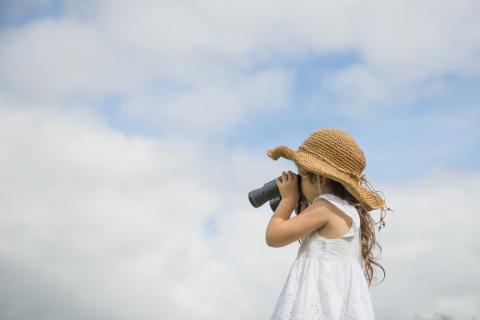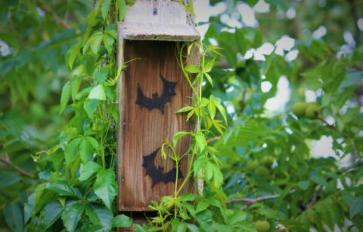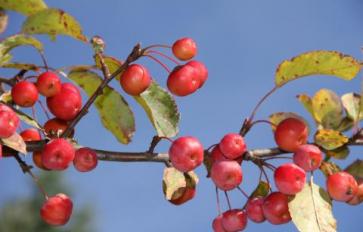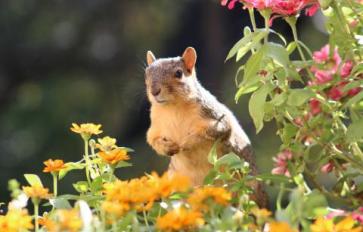
One way to get children engaged in the garden is to share with them your love of birding. Birds are both helpful to a garden and also a sign of a healthy garden, so encouraging them to visit your yard is a great idea. An even better idea? Getting kids excited about the feathered visitors and the role they play in the larger ecosystem. What a perfect way to get children to love nature!
Wondering how to get your kids interested in these flying friends instead of the big bad screen that’s right in front of them? Here are 7 ideas to help your child see the joy in birding—in your backyard and beyond.
1. Set Up A Bird Station
Take a corner of your home and turn it into a bird station. Deck it out with binoculars, field guides, and a notebook to keep track of what birds you identify in your yard. (If your children are too young to write the bird names, they can draw pictures of them and color them. If songs, poems, or rhymes are more their speed, they can make up those about the birds too. Encourage their interests here!) You can also include picture books about birds (even if they’re story books), bird puzzles, bird coloring & activity books… (Get the idea?) Ask for the kids to help decorate the corner, if you want—they can color bird pictures to put on the walls, make a bird-themed pillow or throw blanket to make the corner cozier, decorate a box or basket to store the binoculars/field guide in, or whatever else they can think of!
2. Make Feeders & Houses
This project is usually pretty easy to convince children to participate in, but it may require quite a bit of direction from you, depending on their ages. You can scale this to the kids’ (and your) abilities…if you’re into carpentry or DIY, make a fancy feeder, birdhouse, or birdbath. If you’re less skilled, spread peanut butter onto a pinecone or apple core and roll it in birdseed. Attach a string and hang it for instant eco-friendly bird feeder! You can also hang fruit (half an orange or a kebab of apples, etc.) or make a feeder out of an empty plastic bottle. This is another one where you can play to your children’s strengths and interests. If you’ve got a lego guru on your hands, challenge him or her to build a birdfeeder or birdhouse with them. If painting is more his or her style, consider buying a pre-made birdhouse (or easy-to-make kit) but letting your child paint and decorate it.
3. Play A Game
Games are a great way to make things more fun for kids. Get as creative as you want here! For example, play backyard bird bingo. Make a bingo card with some of the birds (or other critters) you’re likely to see in your backyard (consult local birders or the Audubon Society to find out what you’re likely to see if you don’t know). Give each child their own bingo card and have a prize of some kind for when it’s filled up (try bringing a friend to their favorite park for a free and nature-based reward). You can expand this game to include any bird you see any time you’re out and about to encourage your kids to be aware of nature at all times.
4. Don’t Forget About Sounds!
If your child is an auditory learner, this is a great way to raise interest in the birds. Look up videos (with audio) or audio files of local birds. Most backyard birds make a few different sounds…play the sounds and see if your child can learn to identify birds by their sound. You can of course expand this to birds that exist beyond your backyard if they enjoy this game!
5. Designate A Feeder-Buddy
If your children are old enough, assign each one a specific feeder or bath to be responsible for. This means making sure it has plenty of seed or nectar, refilling it as necessary (if they’re not capable of doing it independently, their job can be to tell a parent it needs to be refilled), and keeping it clean. Being responsible for a feeder will give them a sense of pride in it and make them especially excited to attract birds to it. Bonus? It teaches responsibility and good birdfeeder hygiene!
6. Learn To Describe Birds
It can be frustrating for a child to learn to identify a bird, so you don’t always have to focus on figuring out what the bird is. Learn other ways to talk about the bird besides its “name.” What is its body shape, short or round? Narrow or long? Is its beak short or long? Thin or wide? Are the legs short or long? (Find more questions here.)
7. Go Beyond The Backyard
Once your kids understand how to use a field guide to identify birds, they will take more pleasure in discovering new birds on vacations or road trips. While hiking, camping, and farm stays are excellent ways to see new birds, even short day trips can land your family in places with birds different from what you see in your backyard (think nature preserves, water-y areas, or mountain ranges). Bring the binoculars, field guides, and journal of birds so you can keep a list of those you identify. If your child is especially young or has a very short attention span, bring other nature “toys” on the birding trip—think nets and collecting jars or bags. In other words, turn a birding trip into an all-around fun journey through nature.








